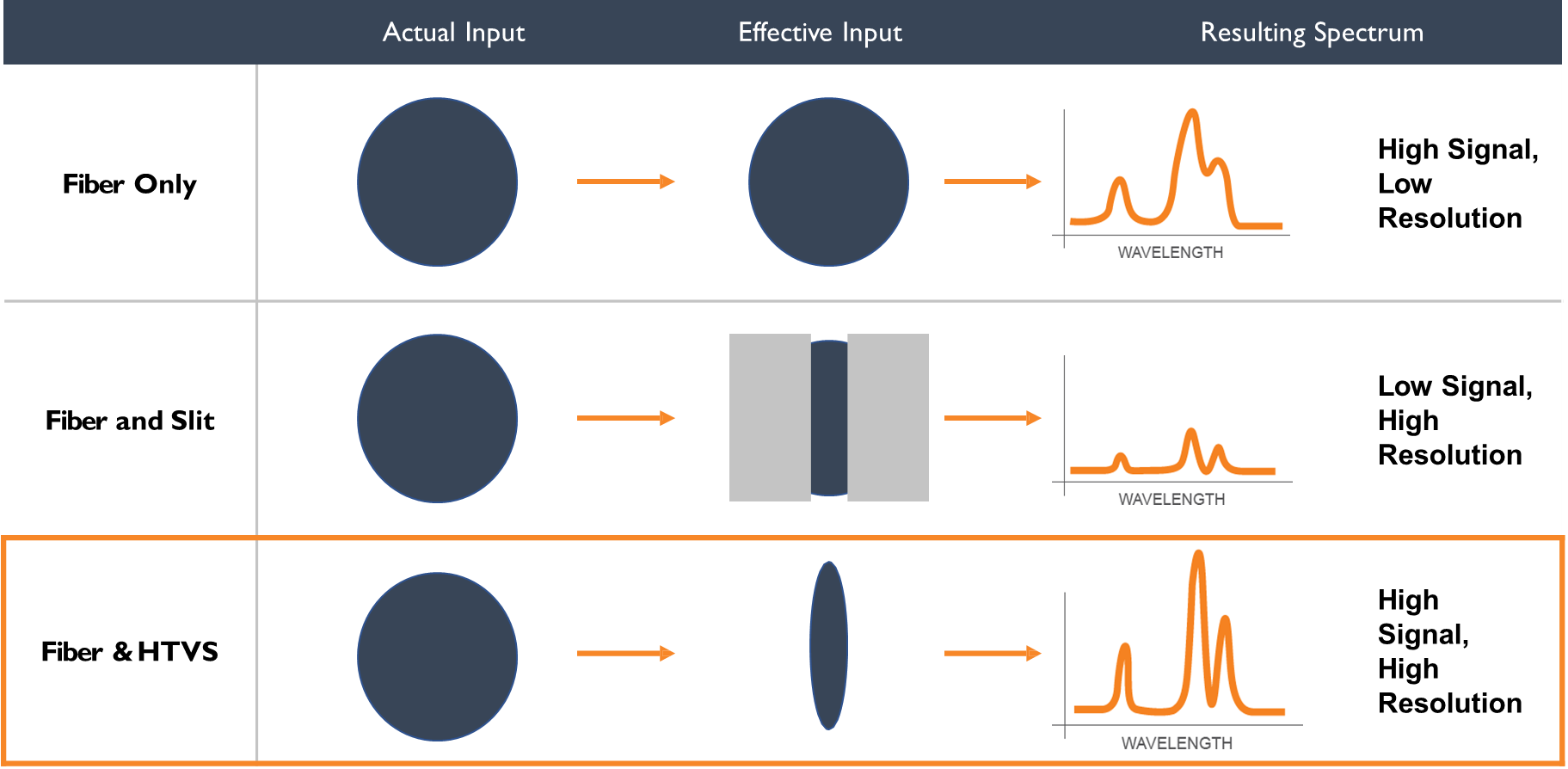High-resolution dispersive Raman spectrometers have fundamentally been limited in optical throughput due to the entrance slit, or in the case of scanning monochrometers, the exit slit. With advancements in optical thin film coatings, highly efficient volume phase holographic gratings, and solid state detector technology, the optical efficiency of a spectrometer has the potential to be upwards of 80 to 95%. A slit on the other hand typically rejects 75 to 95% of the light in order to achieve high spectral resolution, bringing the total optical efficiency of a high-resolution dispersive spectrometer down to less than 5% in most cases.
Raman Spectroscopy
Our Advantage
Dispersive Raman spectrometers function by incorporating some form of optical dispersive element such as a prism or grating that separates the incoming broadband light beam into its constituent wavelengths and projects the light onto the detector plane. (Note that while wavelengths of light are often presented as different “colors”, a spectrum often includes wavelengths invisible to the human eye including infrared and ultra-violet wavelengths.) The light intensity of each wavelength contained in the spectrum is then determined by the intensity of light at different locations on the detector plane as determined by the relative positions of the dispersive element and the detector position.
The generally accepted technique to achieve higher resolution in a dispersive Raman spectrometer is to use a physical slit to mask the image of the incoming beam before it passes through the dispersive element, which effectively narrows the position of each wavelength component of the projected spectrum on the detector plane. This is a simple and effective way of improving the spectral resolution, as shown in the figure below, but it comes at the high cost of wasting all of the light not passing through the slit.
To address this etendue problem, Tornado has manufactured dispersive Raman spectrometer platforms based fundamentally on a proprietary invention called a high-throughput virtual slit (HTVS™). A virtual slit is a device that is able to achieve the same high-resolution benefits of an actual slit aperture but maintains nearly 100% light throughput, eliminating the classic trade-off between throughput and resolution.
Benefits of Using Tornado’s Technology
The additional optical throughput at high spectral resolution is a benefit that can be translated into several different advantages to any Raman spectroscopy systems:
- Collect higher quality data with higher resolution and/or higher signal strength
- Reduce acquisition times for a given source
- Compensate for weak light sources or input
- Enable new spectroscopy applications
- Reduce weight and cost by minimizing cooling equipment for detectors and lasers, and reducing the size and weight of collection apertures
Application Note
Turbocharging Raman Measurements with High-Throughput Virtual Slit Spectrometers
A Raman measurement that is intended for quantification needs to be fast, accurate, and precise, encapsulating the best possible resolution in both wavelength and intensity. This white paper describes the proprietary HyperFlux™ optical spectrometer designs developed by Tornado using its core HTVS™ technology.



